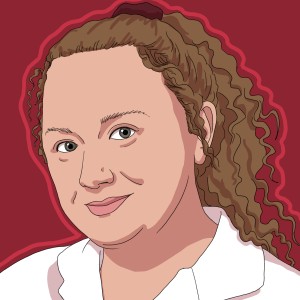
Margaret Smith is a Chicago-based writer and editor with a passion for storytelling about their community. When not wordsmithing, she enjoys swimming in Lake Michigan, visiting museums and watching horror films.
Author Page
Dr. James Buskirk brings care to high school athletes in local communities.
Photo by Max ThomsenFor James Buskirk, PT, DPT, PhD, AASPT (SCS), MSEd, AIB-CON, MTC, it has always been about getting out on the field — or, at least, the sidelines. That’s exactly where you’ll find him, thanks to a program he’s spearheaded at Rosalind Franklin University Health Clinics (RFUHC) that combines clinic outreach with athletic care.
“I enjoy taking care of patients,” says Dr. Buskirk, who is the director of the Physical Therapy Faculty Practice Clinic and assistant professor in the Doctor of Physical Therapy program. “Ultimately, I wanted to be able to branch out into the community and take care of athletes at the high school and, potentially, collegiate levels at the clinic.”
Dr. Buskirk’s presence at sporting events allows him to accurately gauge the level of care injured players may require. He has partnered with local high school hockey, soccer, volleyball, basketball, and track and field programs. The full-service, immediate care Dr. Buskirk offers on the sidelines at sporting events helps fill the personnel gap faced by many of these institutions.
The clinic works with schools in the Waukegan, North Chicago, Gurnee and Northbrook communities. While most of the events are sanctioned by the Illinois High School Association, some are club sports not directly affiliated with the schools. In the absence of a school-appointed sports medicine team, the clinic steps in to provide oversight of these student athletes. Some institutions may have certified athletic trainers on staff, but they lack a physical therapy component, which is a necessity, especially for contact sports. Dr. Buskirk helps fill that need on the sidelines by managing athletes’ injuries, especially those who experience a significant head injury or concussion. He manages their immediate care and encourages them to visit the clinic for follow-up care. There, Dr. Buskirk and other PT clinicians provide treatment options and rehabilitation, and evaluate when it is safe for athletes to return to participation in school and sports.
While working with the community is at the heart of the clinics, for Dr. Buskirk and other researchers, it is not their sole focus. For example, Dr. Buskirk is working with patients at the clinic and the Lovell Federal Health Care Center utilizing the newly FDA-approved i-STAT Alinity, a handheld, portable laboratory device capable of blood biomarker detection for head injuries. With this device, Dr. Buskirk is forging a new protocol for head injuries — one that eliminates unnecessary exposure to radiation via CT scans and offers critical answers to head-trauma patients more quickly than ever before.
Though traditional evaluations, such as neuropsychological paper-and-pencil tests, are still necessary in head-injury assessment, according to Dr. Buskirk, there’s a real need for this new technology. As it continues to develop, he is certain these advances will change the standard protocol, and future, of the field.